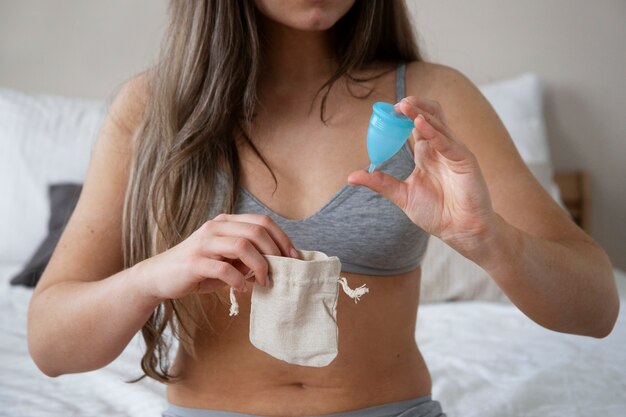Safely Heating Breast Milk From the Refrigerator: A Comprehensive Guide
Breast milk provides crucial nutrients and antibodies essential for your baby's development. With many parents storing expressed milk for convenience, knowing how to properly heat breast milk from the refrigerator ensures you are safely preserving its nutritional benefits. In this guide, we will explore how to heat breast milk effectively while maintaining its quality, incorporating expert tips, and acknowledging common pitfalls.
Why Proper Heating Matters
Breast milk is a natural source of nutrition tailored specifically for your baby. It's rich in proteins, fats, and beneficial antibodies. However, improper heating can denature some of these components, leading to nutrient degradation or hot spots that may scald your baby. Ensuring even and gentle heating is critical to delivering both safety and nutrition.
Key Considerations for Heating Breast Milk
- Avoid Microwave Heating: Microwaving breast milk can result in uneven heating, potentially creating scalding hot spots. It may also destroy essential proteins and impact the milk's overall quality.
- Optimal Temperature: Aim to warm milk to body temperature, around 98.6°F (37°C). This mimics the natural temperature at which your baby nurses directly from the breast.
- Retention of Nutrients: Gentle warming helps preserve breast milk's beneficial proteins and antibodies, supporting optimum baby health.
Safe Methods to Heat Breast Milk
When it comes to warming breast milk, a few popular methods cater to both efficiency and safety. Each method has its benefits and is widely recommended among parents.
Using a Warm Water Bath
One of the most common and effective ways to heat breast milk is the warm water bath method. It is economical, easy to implement, and preserves the milk's nutrition content effectively.
- Prepare Your Setup: Fill a bowl or pot with warm, not boiling, water.
- Submerge the Bottle: Place the bottle of breast milk in the water. Ensure the cap is loosely placed to allow expansion.
- Swirl and Test: Swirl the milk gently to distribute heat evenly. Test the temperature by sprinkling a few drops on your wrist. It should be comfortably warm, not hot.
Bottle Warmers
Bottle warmers provide convenience, especially for nighttime feedings and busy days. These devices offer a more controlled, consistent heating process.
- Follow Manufacturer’s Instructions: Each warmer may have different settings and guidelines.
- Adjust According to Volume: Smaller amounts of milk warm quicker than fuller bottles.
- Regular Maintenance: Clean the warmer regularly to prevent build-up or malfunctions.
Tips for Maintaining Milk Quality
Heating breast milk can impact its beneficial properties if not done correctly. Here are some tips to maintain its integrity while also ensuring your baby's safety:
Storage Practices
- Label Clearly: Always mark the date of expression and storage on bottles or bags.
- Use FIFO System: Use the First In, First Out approach, consuming the older milk first to prevent spoilage.
Temperature Checks
- Use a Thermometer: For precision, using a thermometer can ensure you reach the optimal warming range without overheating.
- Regular Testing: Always test the milk temperature on your inner wrist before feeding to ensure it’s not too hot.
Handling Guidelines
- Avoid Reheating: Previously heated milk should be used within two hours and not reheated thereafter, as it loses its nutritional value over time.
- Shake Gently: Gentle shaking, not vigorous shaking, redistributes cream and ensures the milk blends evenly.
Common Challenges and Solutions
Heating breast milk can occasionally throw up unexpected challenges. Here’s how you can navigate them with ease:
Challenge: Uneven Heating
Solution: Constantly swirl the milk during the warming process for consistent distribution of heat. Consider using thermometers or different warmers if issues persist.
Challenge: Leaking or Spilled Milk
Solution: Opt for secure storage containers, ensuring lids are tightly sealed. Gently open containers post-storage to prevent pressure release spills.
Challenge: Insufficient Heating
Solution: For initial testing, begin with a shorter heating duration and gradually increase until the milk reaches the desired warmth. It's easier to warm in increments than to cool overheated milk.
Points to Remember
Here’s a handy summary of essential tips to ensure a smooth, safe warming process:
- 🍼 Avoid microwaves: Stick to safer alternatives like bottle warmers or warm water baths.
- 🔥 Monitor the temperature: Aim for warmth, not hotness – always test on your wrist.
- 🕒 Time-saving tips: Anticipate feeding schedules to warm milk without haste.
- 🌡️ Thermometer advantage: Utilize to consistently hit target warming range.
Final Insights on Breast Milk Heating
Knowing how to heat breast milk properly isn't just about convenience—it's about preserving the nutrition that makes it so invaluable to your baby's early development. Whether you're using a bottle warmer or a water bath, the reliability and safety of the method ensure the robust delivery of nutrients safely to your baby. By paying close attention to the details such as temperature checks and storage times, you are actively contributing to your infant's health and well-being. Every warmed bottle represents nourishment, comfort, and your nurturing care.
In your journey as a caregiver, having the correct information sets the pace for both ease and confidence. As you embrace these methods, keeping breast milk nutritious and safe will seem second nature, allowing you to focus on the beautiful moments that truly matter.
